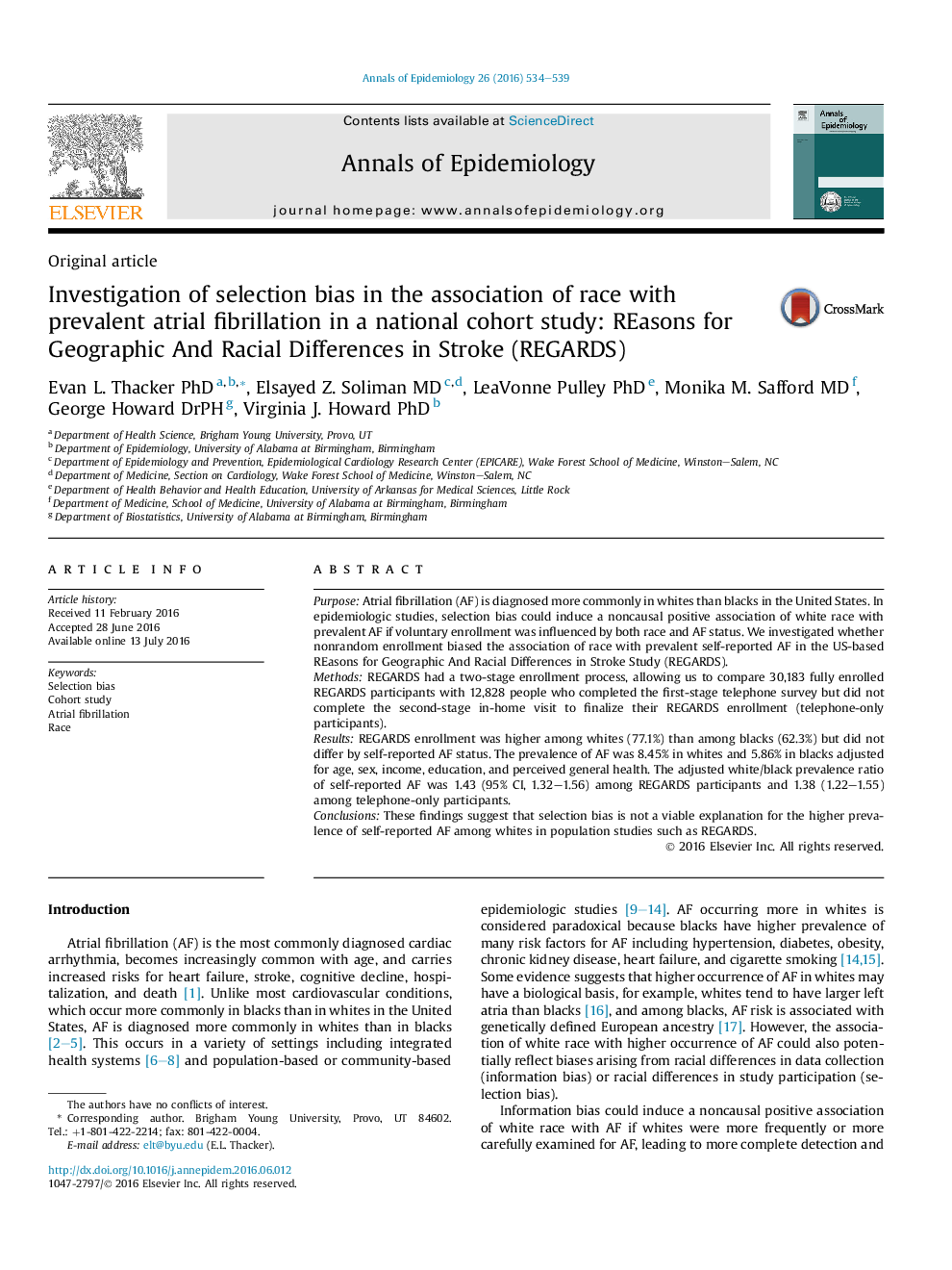| Article ID | Journal | Published Year | Pages | File Type |
|---|---|---|---|---|
| 6147716 | Annals of Epidemiology | 2016 | 6 Pages |
PurposeAtrial fibrillation (AF) is diagnosed more commonly in whites than blacks in the United States. In epidemiologic studies, selection bias could induce a noncausal positive association of white race with prevalent AF if voluntary enrollment was influenced by both race and AF status. We investigated whether nonrandom enrollment biased the association of race with prevalent self-reported AF in the US-based REasons for Geographic And Racial Differences in Stroke Study (REGARDS).MethodsREGARDS had a two-stage enrollment process, allowing us to compare 30,183 fully enrolled REGARDS participants with 12,828 people who completed the first-stage telephone survey but did not complete the second-stage in-home visit to finalize their REGARDS enrollment (telephone-only participants).ResultsREGARDS enrollment was higher among whites (77.1%) than among blacks (62.3%) but did not differ by self-reported AF status. The prevalence of AF was 8.45% in whites and 5.86% in blacks adjusted for age, sex, income, education, and perceived general health. The adjusted white/black prevalence ratio of self-reported AF was 1.43 (95% CI, 1.32-1.56) among REGARDS participants and 1.38 (1.22-1.55) among telephone-only participants.ConclusionsThese findings suggest that selection bias is not a viable explanation for the higher prevalence of self-reported AF among whites in population studies such as REGARDS.
